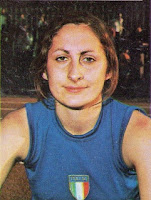NEW - Pietro Aretino – writer
Satirist was both admired and feared by the nobility
Poet, playwright and prose writer Pietro Aretino was born on this day in 1492 in Arezzo in Tuscany. Aretino became famous for his satirical attacks on important figures in society and grew wealthy from the gifts he received from noblemen who feared being exposed by his powerful pen. Although he was the son of an Arezzo shoemaker, he pretended to be the natural son of a nobleman and took his name from Arretium, the Roman name for Arezzo. He moved to Perugia while still very young and lived the life of a painter, but in 1517 when he was in his early twenties, Aretino moved on to Rome, where he secured the patronage of the rich banker, Agostino Chigi. When Pope Leo X's pet elephant, Hanno, died, Aretino wrote a satirical pamphlet, The Last Will and Testament of the Elephant Hanno, cleverly mocking the leading political and religious figures in Rome at the time. This established his fame as a satirist. He then wrote a series of viciously satirical lampoons supporting the candidacy of Giulio de’ Medici for the papacy. Giulio duly became Pope Clement VII in 1523. Despite being supported by the Pope and Chigi, Aretino was finally forced to leave Rome because of writing a collection of ‘lewd sonnets’. Read more…
_________________________________________________________________
Massimo D’Alema – former prime minister
Journalist and politician first Communist to lead Italy
Massimo D’Alema, who was prime minister of Italy from 1998 to 2000, was born on this day in 1949 in Rome. He was the first prime minister in the history of Italy, and the first leader of any of the NATO countries, to have been a Communist Party member. After studying Philosophy at the University of Pisa, D’Alema became a journalist by profession. He joined the Italian Young Communists’ Federation in 1963, becoming its general secretary in 1975. D’Alema became a member of the Italian Communist Party (PCI), part of which, in 1991, gave origin to the Democratic Party of the Left (PDS), and, in 1998, to the Democrats of the Left (DS). D’Alema has also served as the chief editor of the daily newspaper, L’Unità, the official newspaper of the Communist Party. In October 1998, D’Alema became prime minister of Italy, as the leader of the Olive Tree centre left coalition. While his party was making the transition to becoming the Democratic Party of the Left, D’Alema stressed the importance of the party’s roots in Marxism with the aim of creating a modern, European, social-democratic party. Read more…
________________________________________________________________
Sant’Agnese of Montepulciano
Miraculous life and death of young nun
Dominican prioress Agnese Segni, who was reputed to have performed miracles, died on this day in 1317 in Montepulciano in Tuscany. She was canonised by Pope Benedict XIII in 1726 and her feast day is celebrated every April 20 on the anniversary of her death. Agnese was born into the noble Segni family in Gracciano, a frazione - parish - of Montepulciano. At the age of nine she convinced her parents to allow her to enter a Franciscan sisterhood. She had to have the permission of the pope to be accepted into this life at such a young age, which normally would not be allowed under church law. After a few years she was one of a group of nuns sent to start a new monastery near Orvieto. When she was just 20 years old she was chosen to be abbess of the community. She gained a reputation for performing miracles, curing people of their ailments just by her presence. She was reported to have multiplied loaves, creating many from a few on several occasions. In 1306 she was recalled to head the monastery in Montepulciano and she started to build a church, Santa Maria Novella, to honour Mary, the mother of Jesus. Read more…
__________________________________________________________________
Ivanoe Bonomi – statesman
Liberal socialist was a major figure in transition to peace in 1945
The anti-Fascist politician Ivanoe Bonomi, who served as prime minister of Italy both before and after the dictator Benito Mussolini was in power, died on this day in 1951. He was 77 but still involved with Italian political life as the first president of the Senate in the new republic, an office he had held since 1948. Bonomi had briefly been head of a coalition government in 1921, during which time he was a member of one of Italy’s socialist parties, but his major influence as an Italian statesman came during Italy’s transition to peace after the Second World War. Having stepped away from politics in 1922 following Mussolini’s March on Rome, he resurfaced almost two decades later when he became a leading figure in an anti-Fascist movement in 1942. He founded a clandestine anti-Fascist newspaper and became a member of an elite committee who would meet in the Seminario Romano, which was owned by the Vatican and therefore considered neutral territory. Bonomi was one of a number of political figures who urged the King, Victor Emmanuel III, to abandon Italy’s alliance with Germany and remove Mussolini from office. Read more…
Home
















